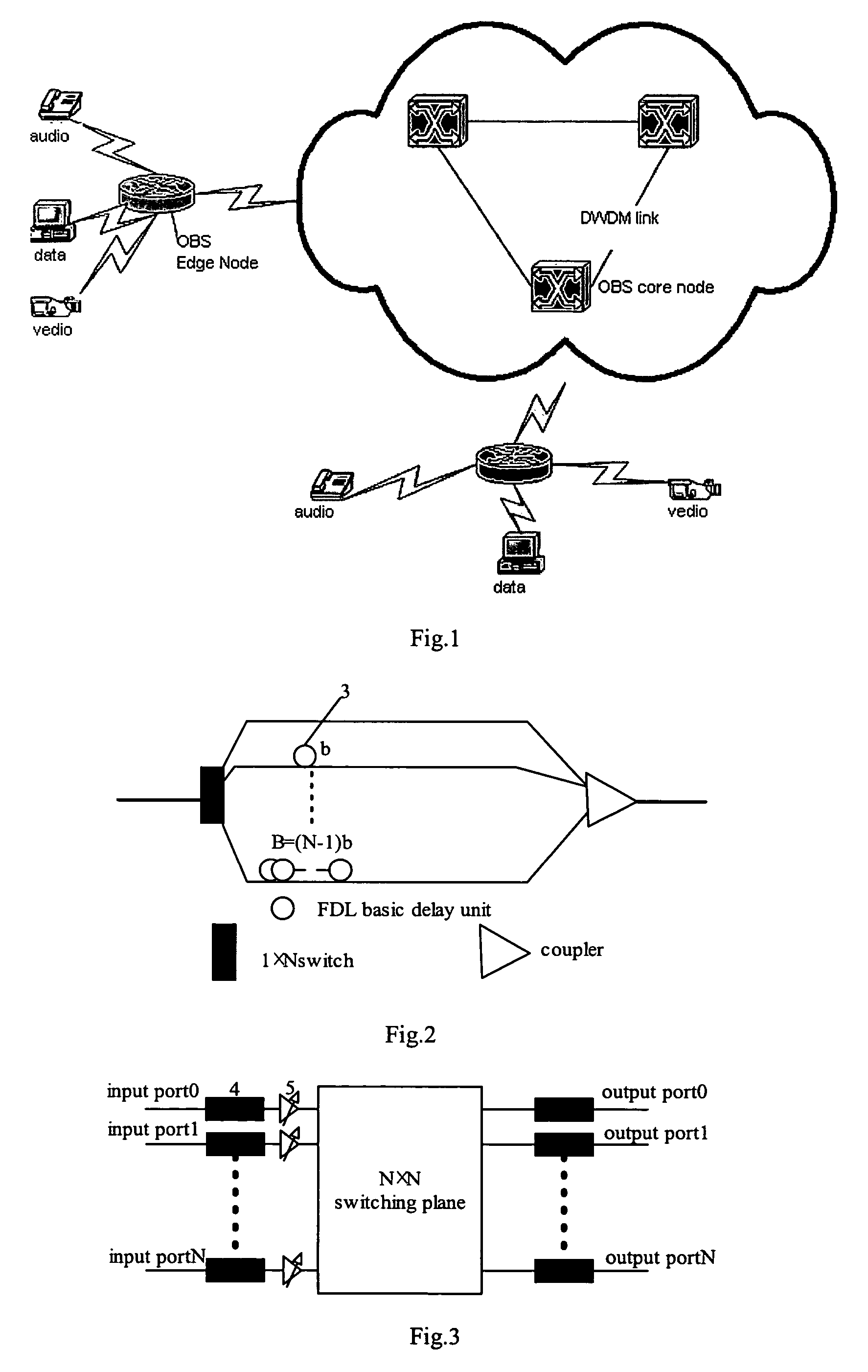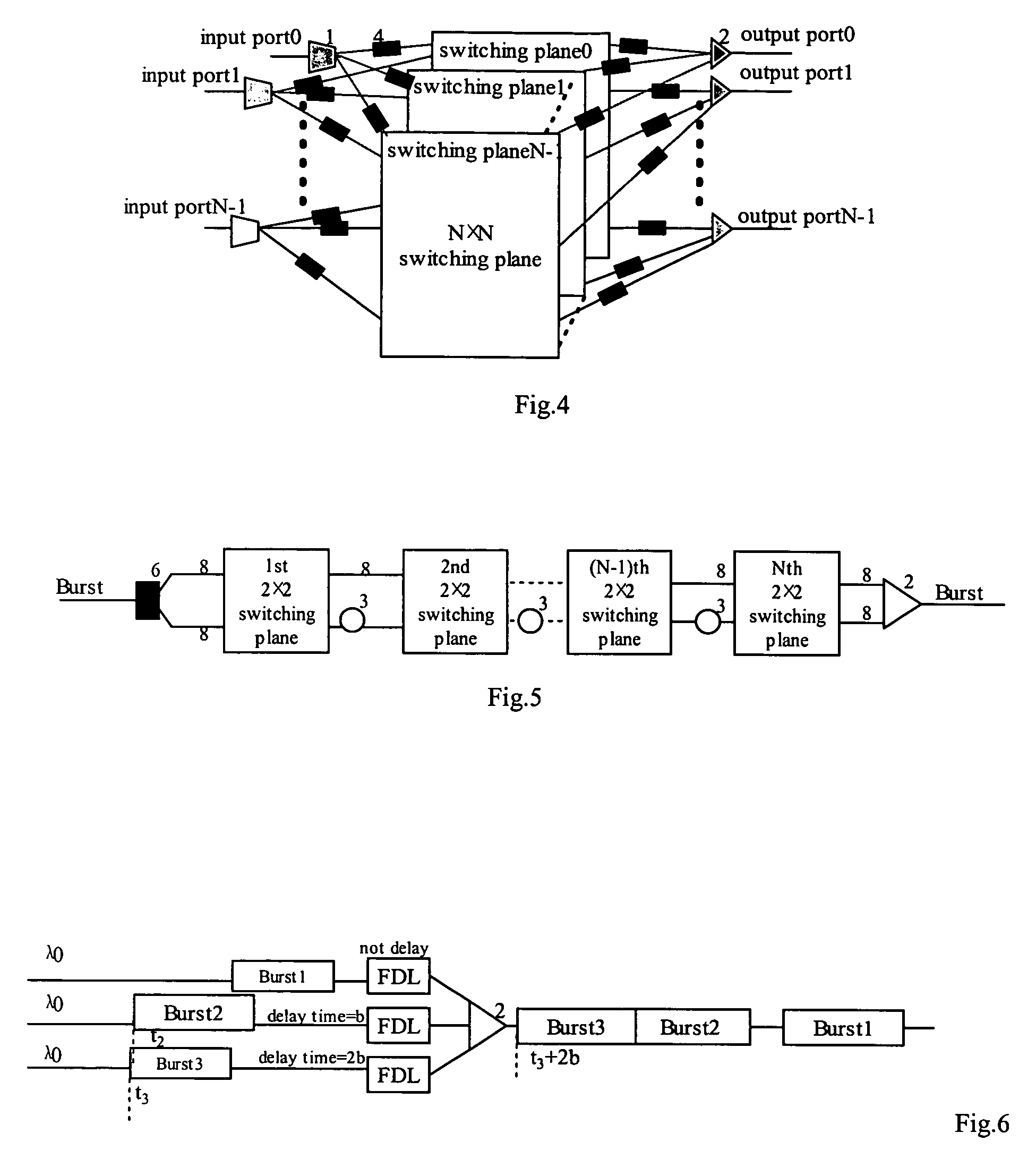Optical burst switching node with internal speedup
a technology of optical burst switching and internal speedup, which is applied in the field of optical communication, can solve the problems of ineffective wavelength routing technology, inability to support wavelength packet switching effectively, and inability to achieve effective wavelength routing technology, etc., and achieves the effect of improving the buffering efficiency of fdl, increasing the internal bandwidth of obs nodes, and increasing the internal speed of nodes
- Summary
- Abstract
- Description
- Claims
- Application Information
AI Technical Summary
Benefits of technology
Problems solved by technology
Method used
Image
Examples
Embodiment Construction
[0038]FIG. 4 is a schematic diagram of the multi-plane OBS node with internal speed-up according to the present invention. The multi-plane OBS node comprises N (N is integer) switching planes 0˜N−1, 2×N2 FDL 4, N 1×N switches 1, N optical couplers 2, N output ports 0˜N−1, and N input ports 0˜N−1. Each input port is connected with a 1×N switch 1 and each output port is the output of its corresponding optical coupler 2. The N switching planes are connected parallelly, wherein a corresponding input of each switching plane is connected with the output of the same corresponding 1×N switch 1 via a respective FDL 4, and a corresponding output of each switching plane is connected with the input of the same corresponding optical coupler 2 via a respective FDL 4.
[0039]It should be noted that among the 2×N2 FDLs 4, N2 FDLs 4 at the input ports are needed only when there are M switching planes (M1 will be replaced by N 1×M switches. It should also be noted that the FDL can be a conventional FDL...
PUM
 Login to View More
Login to View More Abstract
Description
Claims
Application Information
 Login to View More
Login to View More - R&D
- Intellectual Property
- Life Sciences
- Materials
- Tech Scout
- Unparalleled Data Quality
- Higher Quality Content
- 60% Fewer Hallucinations
Browse by: Latest US Patents, China's latest patents, Technical Efficacy Thesaurus, Application Domain, Technology Topic, Popular Technical Reports.
© 2025 PatSnap. All rights reserved.Legal|Privacy policy|Modern Slavery Act Transparency Statement|Sitemap|About US| Contact US: help@patsnap.com



